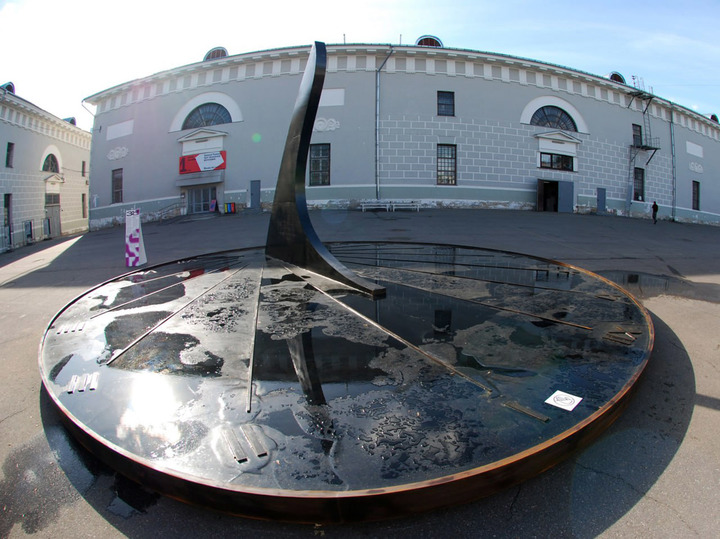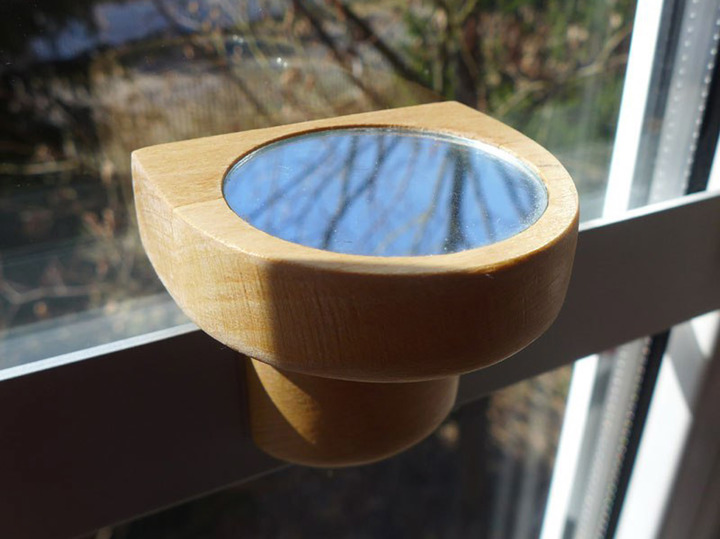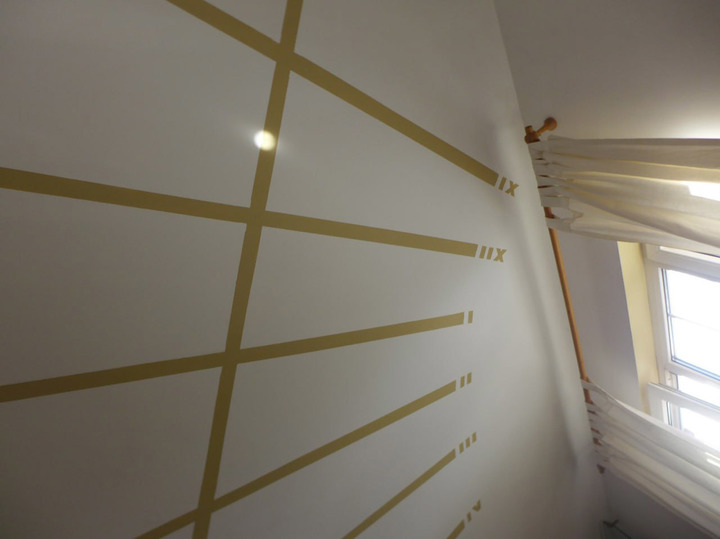Gnomonicist Alexey Krutyakov told how humanity invented time
[ad_1]
True noon is late
— Alexey, how long have you been immersed in the study of time?
— About 10 years ago. I am a military engineer and mathematician by training. In the 90s, he went into business and opened his own IT company. And then I got tired of it and wanted to do something for my soul, and so I became interested in solar time. Became a gnomonic. People who make sundials have such a funny name. Because the structure that casts a shadow in a sundial is called a gnomon. Translated from Greek it means “pointer”.
— Are gnomonics in demand?
– Absolutely unclaimed. To reinterpret Herzen, we can say this: the circle of these gnomonicists is narrow, they are terribly far from the people. There are no more than 50–100 people in the world for whom this is a professional activity, and several thousand more who are passionate about the topic. Just now I was consulting with the artist Vladimir Chernyshev, who made an art object in the form of a sundial for the “Here and Now” festival. My task was to set up the sundial in the courtyard of the Museum of Moscow so that it would show the correct time. To do this, you need to ensure the correct angle of inclination and direction of the gnomon. This is due to the latitude of the place where we are located. The pointer must be parallel to the Earth’s rotation axis. Accordingly, each latitude will have its own angle of inclination. But longitude is also important, since to display standard time you need to correctly calculate the angles of the hour lines. Determining the north-south direction is most accurately done at true noon, which is approximately 12.30 Moscow time. A sundial measures local time, it is called true, but it does not coincide with the average time by which we live.
– How long have we been in the invented time?
— If we take Europe, then with the transition to clocks of the same duration, which occurred with the development of mechanical clocks in the 15th–17th centuries. The next stage is associated with the introduction of standard time a little over 100 years ago. And since 1972, we have been living according to calculated UTC time (Coordinated Universal Time, that is, Coordinated Universal Time). Previously, standard time was adjusted based on observations at Greenwich. Well, in programming, the beginning of the Unix era is associated with the date January 1, 00 hours 00 minutes, 1970. All electronics and modern gadgets inside have a timer chip that counts time in milliseconds from this moment. And according to local solar time, noon occurs only when the sun is exactly in the south, at its maximum point. True noon has been considered very important throughout human history. For example, it is still the time for the midday prayer of Muslims. The midday prayer, called Dhuhr, occurs every day at different times in each place. In each country, prayer times are calculated by astronomers. In Russia, this is done at Moscow State University. The second prayer among Muslims – the afternoon Asr prayer – is determined in its beginning and duration by the long shadow from the vertical gnomon. A little over a hundred years ago, in every city people lived according to their own time, and at every railway station there was always a sundial. And before the advent of mechanical watches, people divided the daylight hours into 12 parts and the dark time into 12 parts. Therefore, an hour in summer was not equal to an hour in winter.
Well, now humanity is preparing for the transition to virtual time.
— What is virtual time?
— The basis of our time counting system is the rotation of the Earth around its axis – a day. The average length of a day is 24 hours, but the actual day throughout the year varies from 23 hours 59 minutes 39 seconds to 24 hours 30 seconds. This unevenness is due to the fact that the Earth does not rotate in an ideal orbit, and even with an axis tilt. Moreover, the rotation of the Earth itself slows down a little and, in order to maintain correspondence between the real time GMT and the calculated UTC, it is necessary to insert additional “leap” seconds into UTC. However, such abrupt changes in UTC greatly complicate the operation of satellite equipment for geopositioning and deep space communication systems. It is for this reason that on November 18, 2022, at a meeting of the International Chamber of Weights and Measures (ICPM) in Paris, a decision was made to completely abandon the adjustment of UTC time by inserting leap seconds by 2035. When exactly this will happen is unknown, since the slowdown of the Earth’s rotation cannot yet be accurately calculated. And there was no agreement at the meeting of the MPPM. The decision was made by a majority of 59 votes, with Russia voting against, but not for reasons of principle, but because it plans such a transition by 2040.

Time is not linear
— Is it true that the Sun rises in the east and sets in the west?
– This is true only twice a year – on the days of the solstice. If we talk about Moscow, then in winter the Sun rises in the northeast and rises on the day of the winter solstice, December 22, no higher than 10 degrees. And in summer the Sun rises to 57 degrees and will set in the southeast. If you are located strictly on the equator, for example in Ecuador in Quito, then there – yes, the Sun will rise strictly in the east and set strictly in the west every day. And there is also a polar day when the Sun does not set at all…
— Do you live by a sundial?
– Yes I am trying. For example, I made a sundial at home. To do this, a mirror is fixed on the windowsill, onto which a ray of sun falls, and the ceiling is drawn, on which a sunbeam shows the time.
– And how did this change your life?
— I’m a downshifter. Solar time is, in a sense, magic. And, like any metaphysics, it works for those who believe in it. By the way, all astrology is calculated using solar time. It is believed that astrology has no evidence, but in fact there is a scientific basis: everything is calculated there based on the movement of the planets and the Sun. Carl Gustav Jung wrote a work on this subject, “Synchrony as an Acausal Principle,” which explains from a scientific point of view why and when events in the external world coincide with internal psychological states. The fact is that in addition to the linear time by which we live, which is clearly marked and where we can accurately establish cause and effect, there is causation – from the English cause – “cause”. Sometimes seemingly inexplicable coincidences occur. As an example, he cites the story of his patient, who at the reception told him a dream where she saw a scarab beetle, and at that moment a cockchafer flies through the window and sits on his table. And he is just from the scarab family. It would seem that there is no obvious connection between these two events, but there is one. Jung called such events synchronicity. He discovered this phenomenon, classified it, named it and tested it.
— How do you feel about the idea of cyclical time, according to which any culture, civilization or ethnic group develops according to a “life cycle”: it is born, grows up and dies? Everything repeats itself, returning to certain points or events. There is also a spiral model of time, according to which historical cycles lead the social system not to its original state, but to a new one.
“I’m even familiar with more radical theories that there is no time at all.”
But I also agree with the cyclical nature of time and time spirals. The fact is that even the annual rotation of the Earth around the Sun, which we perceive as circular, is actually a spiral if we change the point of observation. After all, the solar system itself moves around the center of our Milky Way galaxy. In order to feel the “spiral of time”, it is necessary to have a completely different consciousness. Our consciousness is now at the level of physical life expectancy. Therefore, most people cannot perceive the spirality of time. I dealt with these problems as a mathematician – I developed a time system and introduced such a concept as essential time. And it is not at all uniform.


The magic of movement
—What is essential time?
“Imagine Ilya Muromets, how he lay on the stove for 30 years, and then got up and accomplished his main feats in three years. If you ask Ilya Muromets how old you are, he is unlikely to answer 33. Most likely, those 30 years while he was lying on the stove are zero. There are times that we live intensely, and there are moments of stagnation.
– But these are the same cycles. A person cannot run all the time; he needs breaks to “recharge” and run further.
– This is true. But time at these moments is perceived unevenly: it slows down during pauses and speeds up when we have a lot of movement, emotions and events, that is, new impressions. Everything, of course, is individual. It is no coincidence that the South American Indians, the Incas, called the calendar “wheel within a wheel” – a very apt name. The Mayans are about the same. Stonehenge is the same sundial. So, they all studied the cycles of the Moon and the Sun. They are synchronized by the Metonic cycle – almost 19 years. During this time, the number of solar and lunar months will be the same, the Sun and Moon will come to the same position as at the beginning of the cycle. It was this Metonic cycle that allowed priests in the past to calculate eclipses. In the same Stonehenge there are 56 special holes, and there, by rearranging the pebbles in a certain way, it was possible to calculate a lunar eclipse. And predict some events. The funny thing is that few people used sundials to measure time during the day. In South America, the Indians placed stones that, on the day of the equinox, form a shadow in the form of, for example, the muzzle of a puma – one of the sacred animals for them. And since there are mountains there and it is not possible to find a horizontal surface illuminated by the sun, they chose special places where on the equinoxes or solstice days the shadow forms a certain image, and it was naturally associated with a certain deity. Then people had magical thinking, but now they don’t.
— Has rational thinking defeated magical thinking? Why then are horoscopes and other “everyday magic” so fashionable?
— Yes, in moments of historical or personal crisis people are prone to magical thinking, but this is completely different. Predictions are perceived as a guide to action or inaction, and not as an opportunity to control events. The time when it was possible to combine real and magical thinking passed more than a hundred years ago.
— How many sundials have you set in Russia?
— No more than 20. In Russia there are very few of them in general. I saw them more while traveling in Europe. I suspect that this is due to the fact that the keeper of time has always been the church, with which we fought at a certain time. The task of any religion is to keep track of time. Few people understand this. Who is the Pontiff? The word comes from the priests who keep track of time; they used to be called pontifexes in Rome, or pontiffs. That is, the pontiff is a person who keeps track of time. After all, initially all religions originated from different priestly cults. All these cults, as a rule, were performed in a certain place, and there was always some object in this place by which time could be kept. Many Catholic churches still have sundials. And this is not simply because there were no mechanical ones then. And this is really because it was believed that the church is the guardian of time. I’ll say it roughly: all religions are about the time of life and death. In pagan times, sundials were a valid device for observing time, the change of seasons, etc. But modern sundials are more likely needed to allow a person to emerge from the hustle and bustle and think about the eternal.
[ad_2]
Source link








